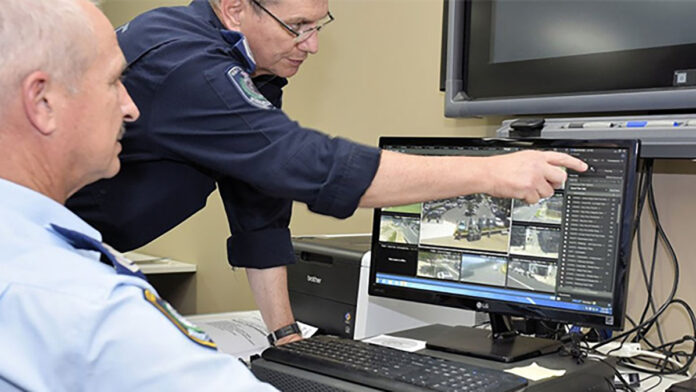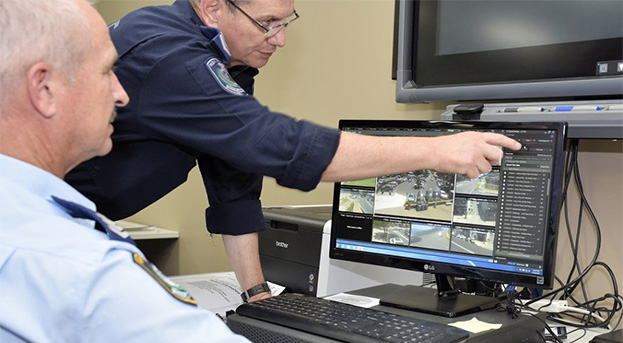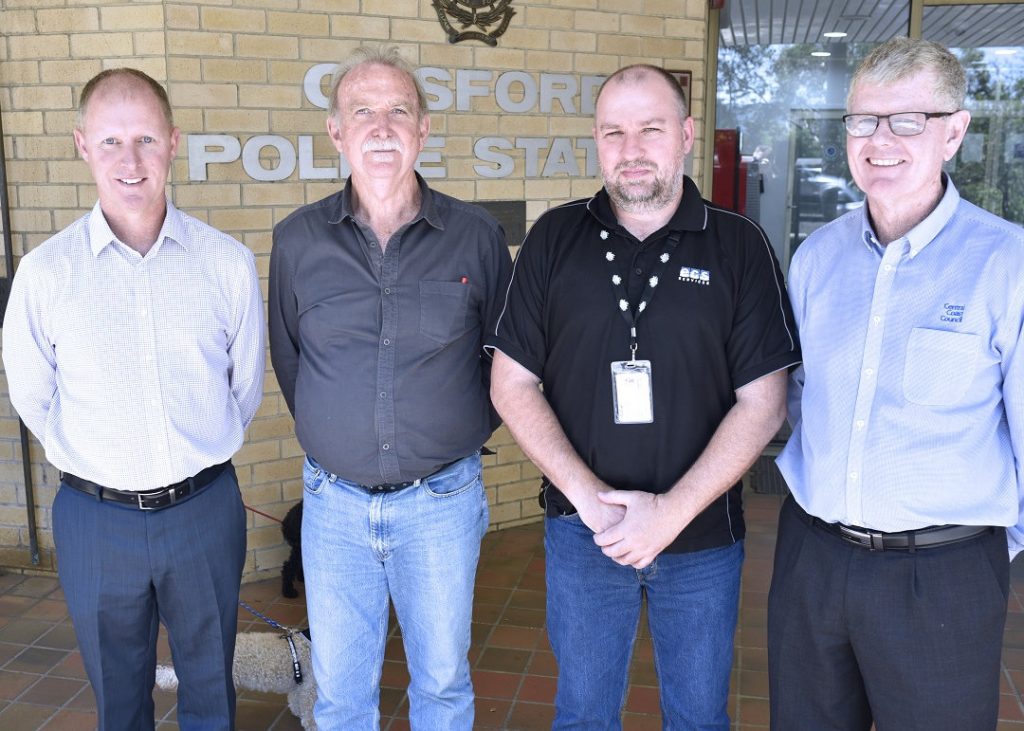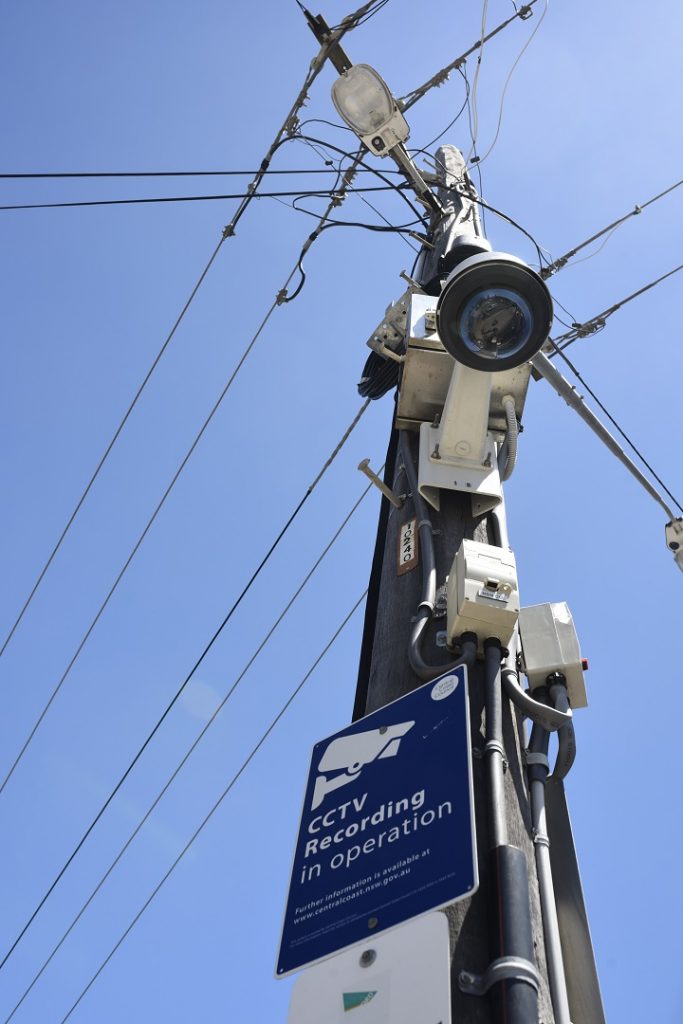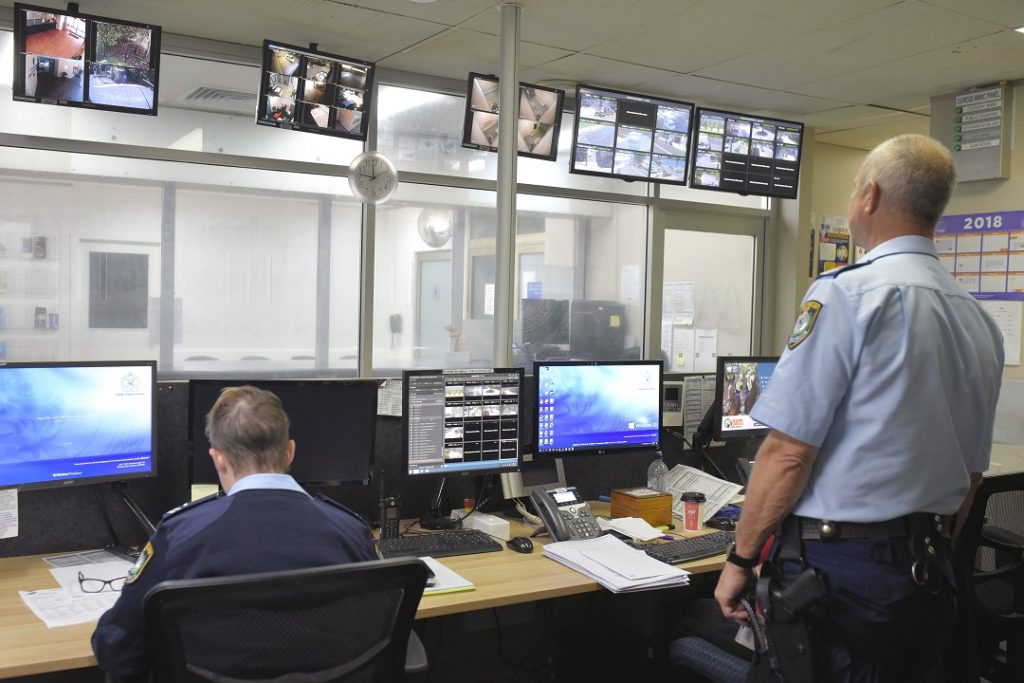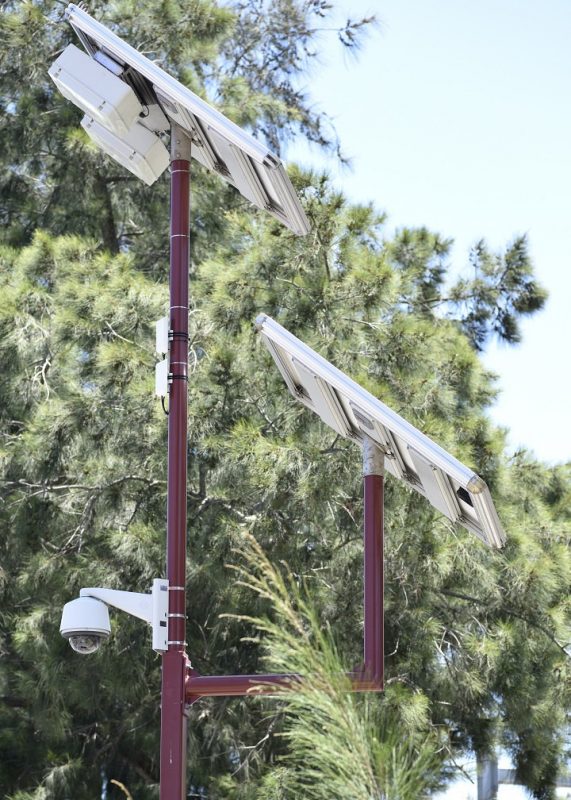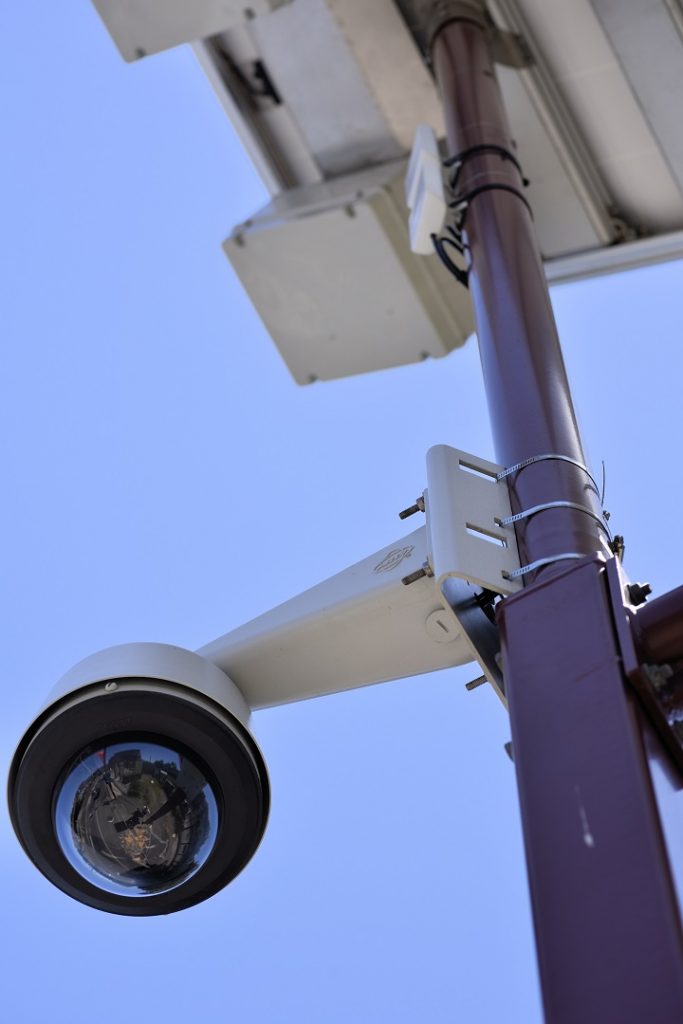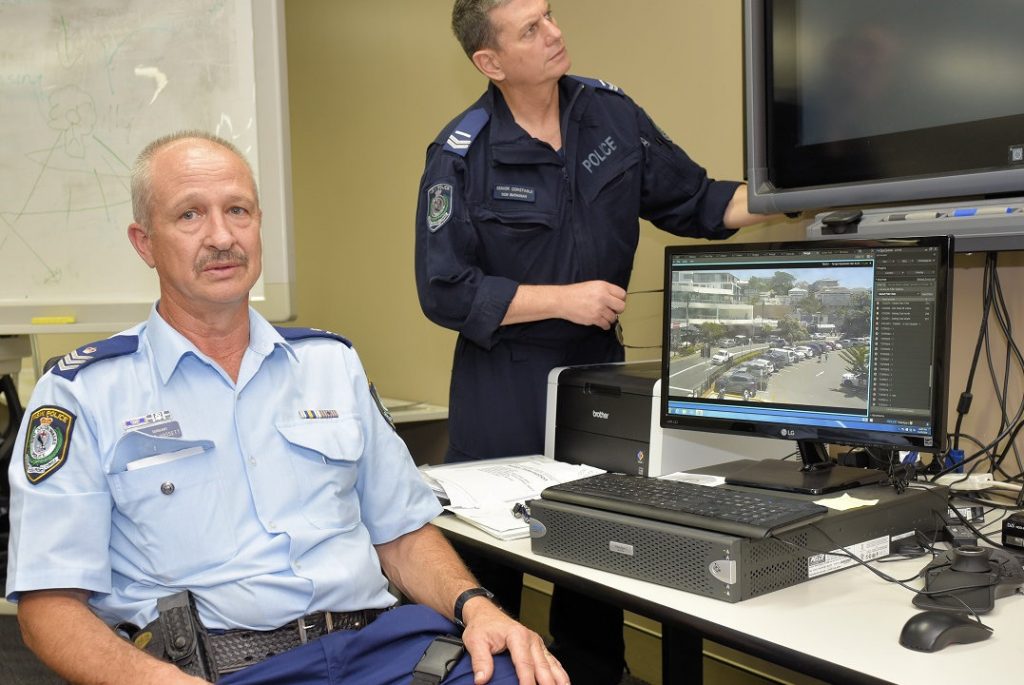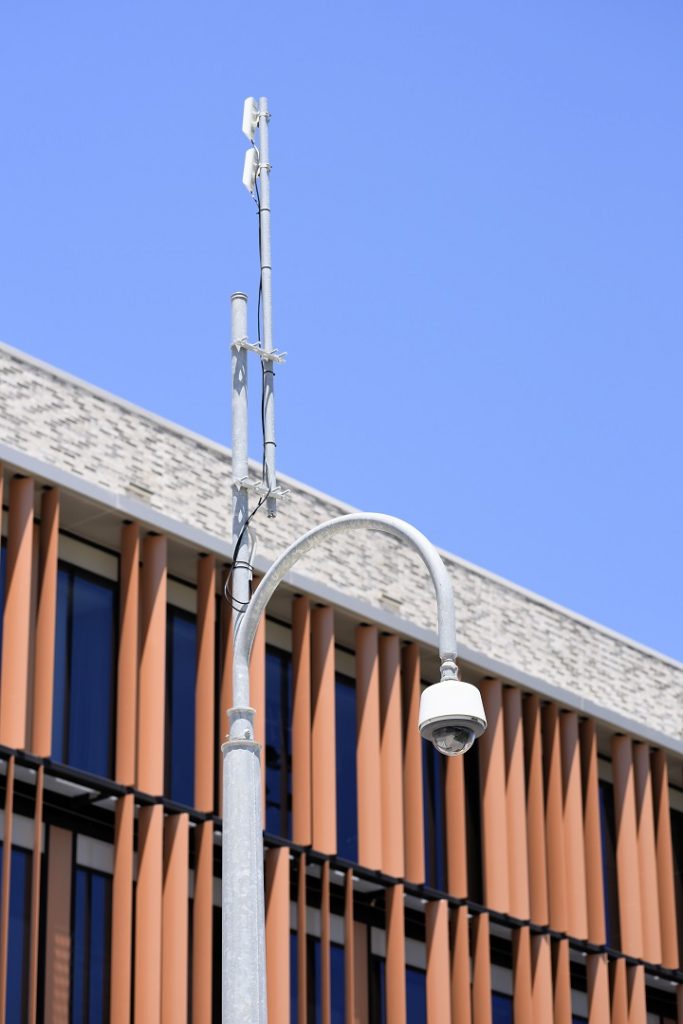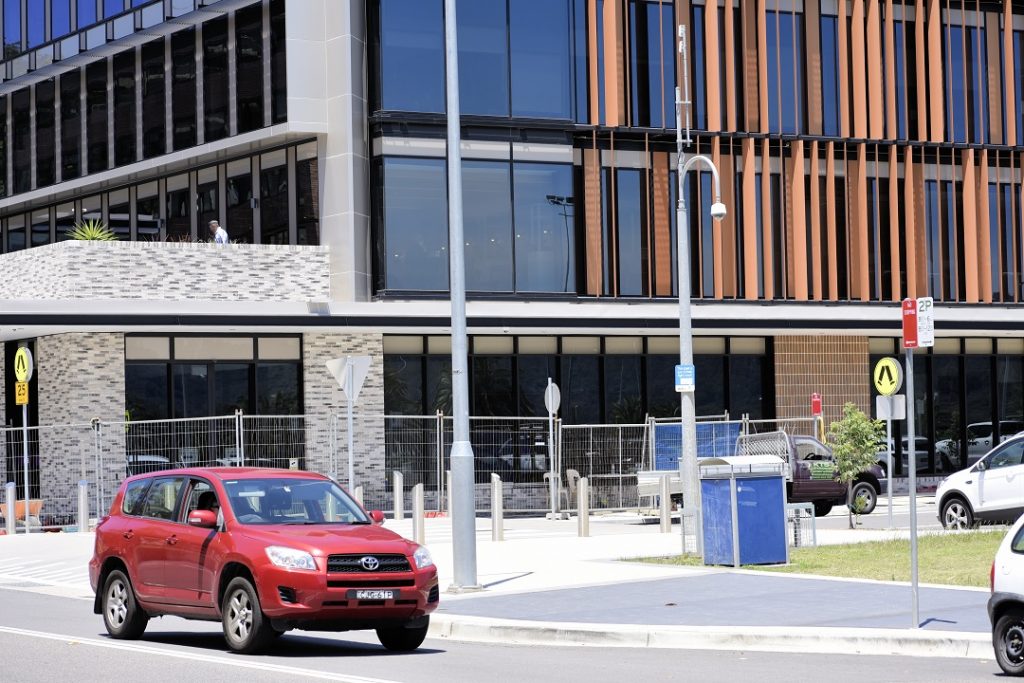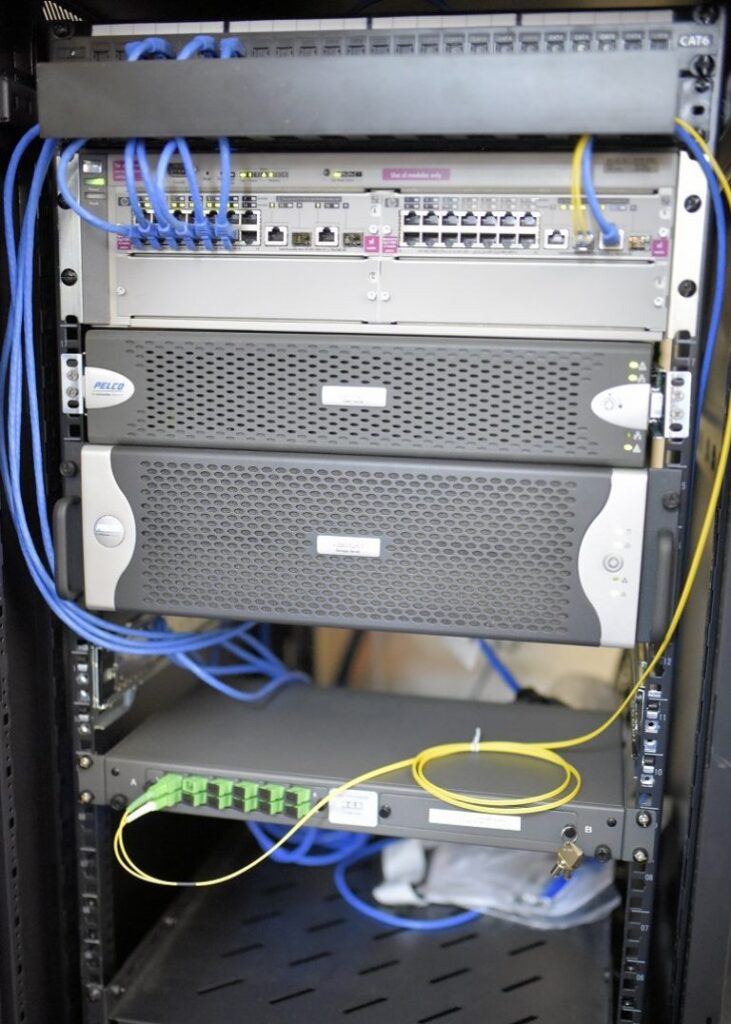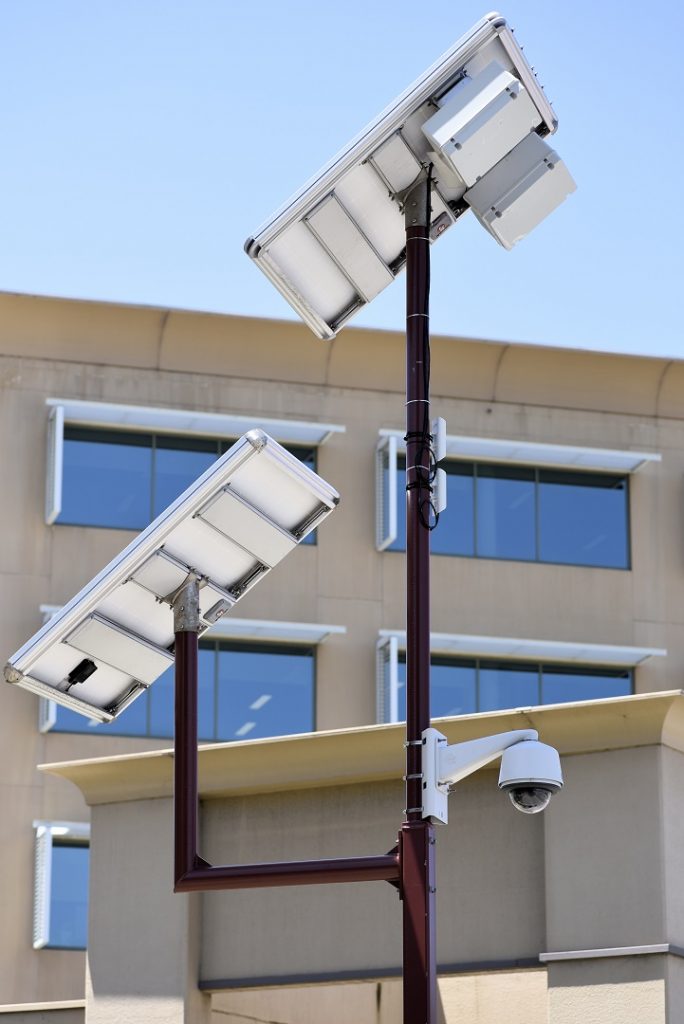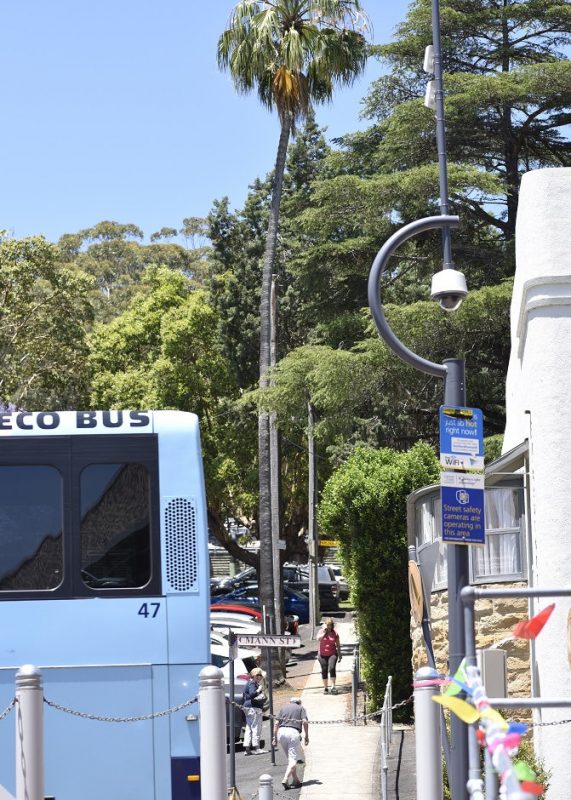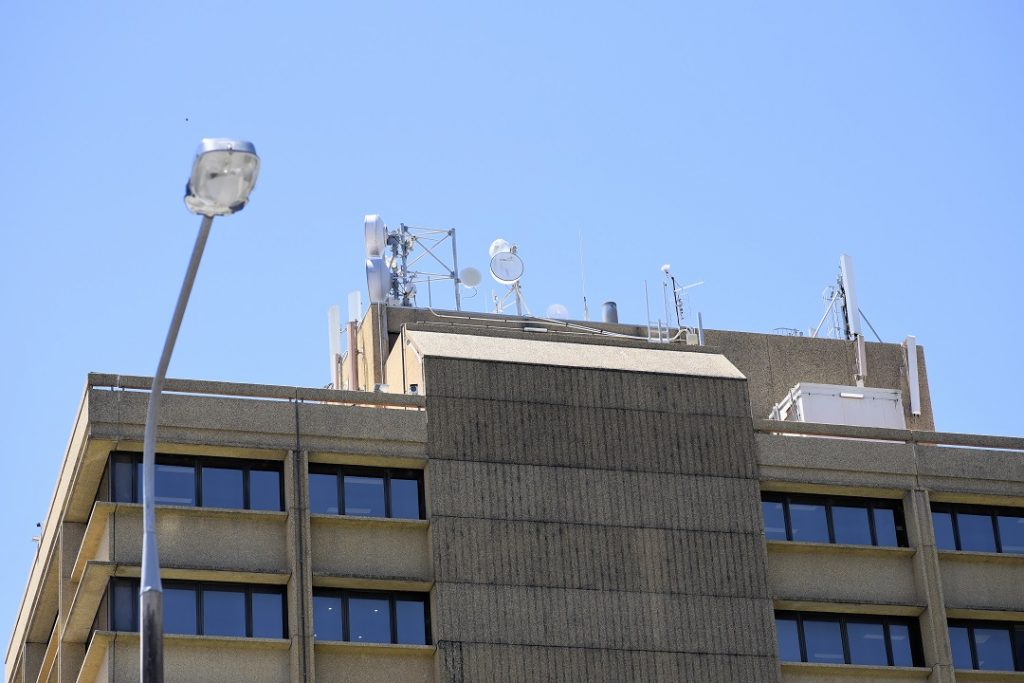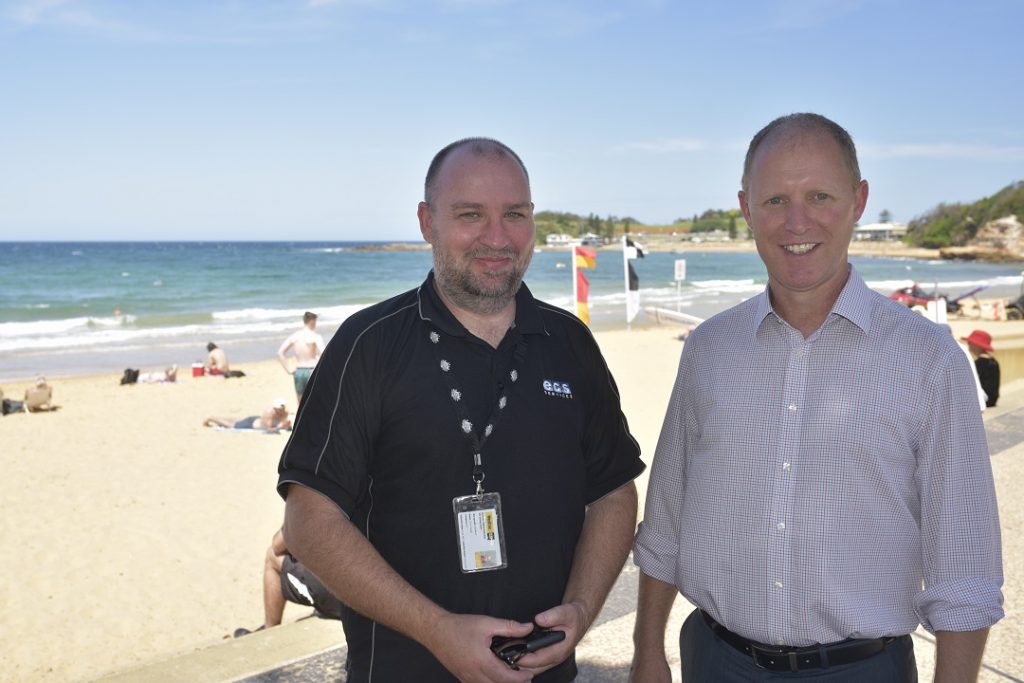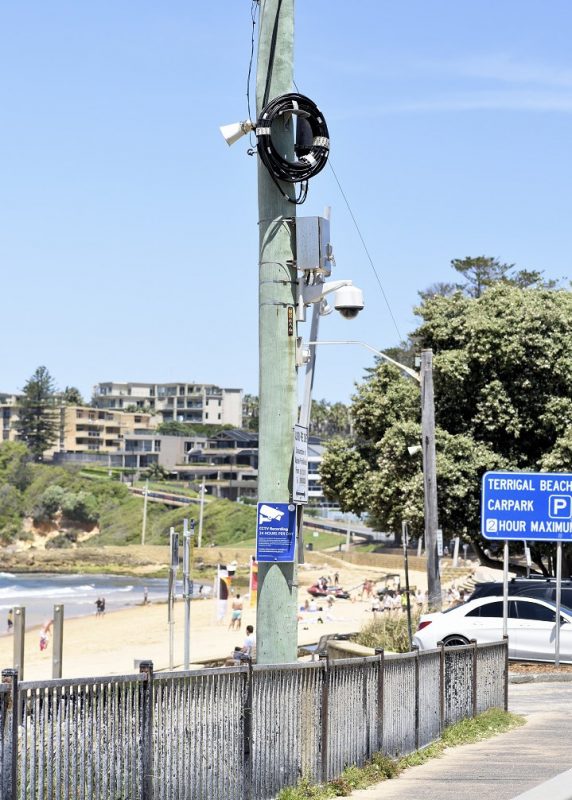Contents
Introduction
Central Coast Council CCTV upgrade – a comprehensive video surveillance solution covering multiple towns across the council area has been built with a combination of Pelco fixed and PTZ cameras supported by Pelco’s VideoXpert VMS and installed by ECS Services. A recent upgrade to the Street Safe solution has seen the latest technologies introduced to key parts of the system.
Central Coast was among the first council areas in NSW to install video surveillance and began rolling out its Street Safe solution nearly 15 years ago in response to requests from the local community. The first cameras were installed in 2004, meaning Pelco and ECS have partnered with Central Coast Council for around 15 years. The original system was analogue, installed in and around Gosford, then expanded to Umina. Next came upgrades at Gosford and Umina and an expansion to Woy Woy, as other businesses fed up with property damage sought CCTV to protect their premises.
Over the years, other suburbs have joined the system, and 108 cameras now cover Gosford, Woy Woy, Ettalong, Copacabana, Erina, Umina, Terrigal and locations in Kariong and Kincumber. More recently, there’s been an upgrade designed to deliver the latest video surveillance technology to NSW Police at Gosford, where it’s used for special event monitoring and incident investigations. Gosford’s upgrade was completed 18 months ago, and 6 months later, it was the turn of Woy Woy and Ettalong.
I get a look at the system with the beachside suburb of Terrigal having just been completed. Giving me a run-through of the system are Sergeant Steve Hassett and Senior Constable Don Buchanan from NSW Police, as well as Jason Haugh from integrator ECS Services, Craig Cobbin from Pelco, and Graham Collyer and David Medcalf from Central Coast Council.
The Street Safe Solution
Every CCTV solution has an operational imperative shaped by its application. Central Coast Council’s Street Safe project is no different. The system is designed to give serious coverage over long distances – that means many of the cameras are PTZs. The Central Coast Council area, with its population of 325,000, comprises the growing city of Gosford and multiple smaller suburbs spread across an area that gets busy in summer and holiday periods.
The sprawling nature of the council area means each remote location requires a similarly serious CCTV solution. At the same time, multiple remote locations monitored centrally demand serious infrastructure, even if the recording is local. Overarching the demands of the CCTV system is the fact the adjacent Hawkesbury River and Brisbane Waters’ geologies comprise sunken river valleys. These make for rugged terrain. Shifting high-resolution video streams over long distances has always been handled by wireless links whose line-of-sight pathways can be circuitous and challenging to attain.
Wireless keeps initial costs down, but variable atmospheric conditions can distort transmissions, impacting bandwidth and image quality. This is something that has long been managed in real-time by police officers – primarily by tolerating the limitations. While there’s now some fibre creeping into the system thanks to a recent ECS-brokered partnership with power utility, PlusES, many of the farthest flung sites still come in on point-to-point wireless links and this also applies to some cameras around Gosford.
It’s in this context that integrator ECS and manufacturer Pelco have worked with Central Coast Council to upgrade key remote locations of the existing solution, delivering operators the operational benefits of the latest cameras and management solutions, while at the same time taking advantage of improved infrastructure.
“Video feeds from the multiple towns around the council area arrive back at Gosford Police Station on a combination of fibre and point-to-point wireless feeds,” Sergeant Steve Hassett tells me. “Officers can follow events, record, and inform patrol officers if there are any issues. The system also has a significant role to play with investigations.”
In the duty room, multiple screens allow officers to view local video feeds and image streams from remote locations. “The Pelco system allows the images displayed to be quickly changed to meet requirements – we can set up different patterns depending on what’s happening,” Sgt Hassett explains.
“We can drag image streams across and mix and match – we might want to keep an eye on a busy beach or waterfront area and a main shopping area and adjacent streets. We also keep tabs set up for areas – Gosford, Umina, Woy Woy, Erina, Copacabana, Ettalong, and Terrigal, as well as the Kariong and Kincumber underpasses.
“We have 48 cameras in Gosford and 108 in all – a mix of fixed cameras and PTZs, which gives us plenty of cameras and the storage capacity of the system is 288Tb, which is considerable, though there are somewhere we would like more. The performance of the 360-degree views from the Optera is amazing, but the storage demand is heavy, so that has to be managed – we have 20 x 12MP cameras stored locally and streaming over fibre so they can be viewed here – that long path can lead to issues at the monitoring end – only a couple of cameras can be viewed at a time.”
According to Sgt Hassett, within the station itself, the system is used for the security and safety of 220 police officers based at Gosford, as well as the public but he says it’s also used to monitor holding cells for instances of self-harm.
“Outside of special events when we might roster extra personnel to keep an eye on the system, there’s no big focus on monitoring – we are reactive, so if an incident is happening, we will then use the system,” Sgt Hassett says.
“The cameras are monitored directly at times like New Year’s Eve, ANZAC Day and Australia Day. Officers here can relay remote events to officers on patrol, which is a great benefit.”
Although the nature of the system means there are remote workstations and storage solutions, Sgt Hassett says police at Gosford still have access to those system parts when required.
“Woy Woy has its management system and views its own cameras, as does Terrigal, but we can still see those cameras if we need to,” he explains. “In some cases, video footage is also stored remotely. A video stream goes to local storage and a second stream is available here for remote monitoring.
“Exceptions are the underpass locations where footage is stored locally and written over after 30 days – if there’s an incident that needs investigation, we need to go and retrieve footage. “There are certain areas we have no coverage where members of the community tell us it would be good to have coverage, and we are working towards covering those areas as part of our upgrade strategy.”
According to Sgt Hassett, any expansion of the system will be community-driven. “From a council point of view, there are no plans to expand the system in the near term – we are looking to upgrade and maintain and fill in any spots we need coverage – that’s what this latest upgrade has been about,” he says. “There may be a grant opportunity that comes out, and an application may be made by community members, but there’s good coverage, and if required, we can also access cameras in the community, depending on how serious an incident happens to be.”
Managing the System
According to Pelco’s Craig Cobbin, the upgraded video management system is the latest Pelco VideoXpert and is supported at multiple locations by powerful workstations linked to local storage servers. Recording and display are both at 25ips and 1080p, and most Street Safe cameras are Pelco Spectra PTZs.
“VideoXpert is ideal for this sort of application,” Cobbin says. “Its fault-tolerant, distributed architecture builds in multiple levels of redundancy, and the system can be deployed as a hardware or software solution. It’s possible for users to create and assign tags and to organize network resources as they like, with full support for immersive wide-angle Optera panoramic cameras, which at Gosford are used to cover a carpark.
“Something else that’s important for the police and council operators is VideoXpert’s VxOpsCenter, which is an operator console that delivers users an intuitive interface capable of accessing and managing video from anywhere in the system. VxOpsCenter also supports up to 6 configurable monitors displaying up to 16 video streams simultaneously – that’s ideal for locations like the Gosford Police Station Duty Room – police officers can jump in and select the camera views they need to see.”
Next, we hop into the lift and head up to the Operations Centre, which Sgt Hassett explains is also used for training purposes. There’s a powerful workstation to manage the cameras with a link to a switch and storage in an adjacent network closet. “On NYE or ANZAC Day, this will be the operations room,” Sgt Hassett says, leading us into a large space.
“The duty room downstairs is busy during events, so having a monitoring location that’s quieter yet still allows officers to take manual control of cameras on a big screen is highly valuable. There are a few seconds lags on some of the remote cameras, but we can still manage PTZ functions from remote sites, which is important for us. The zooms on the new PTZs we’ve had installed during this latest upgrade are very capable – we can pick up number plates, which we could not do before.
“We also use the system to keep an eye on events around licensed premises, but most of the drive behind the system is operations or investigating events – a person may attend the station after being assaulted and robbed and investigating officers can get onto the system and find footage. Alternatively, if an event is witnessed by officers, they can begin to record the incident and then manage a response in real-time. In that respect, too, the system is a massive help to the police. We try to set the cameras up to maximise the coverage we can get at key times – for instance, a PTZ in a key location may move to another preset at a particular time of the day.”
By this time, Sgt Hassett is sitting in the driver’s seat and steering a remote PTZ at a beachside location. The wide-angle view of the Pelco Spectra is glittery sharp, and its capability is underlined when he starts zooming down the street and under the awning in front of a deeply shaded shop. The camera gives police all the information they might need in the event of an incident – it’s great performance.
“Night performance is good, too, but we get the most out of it if we are using the cameras in real-time – if the cameras are on wide-angle, they will still miss dark spots in the scene,” he explains. We spent a fair bit of time with Sgt Hassett driving the system, and it’s interesting to see how the cameras perform on this bright day. The image quality is excellent, and the PTZs deliver huge flexibility and power, ensuring fewer cameras are needed overall. It’s possible to see a large swathe of beachfront on a wide angle and then drill into the scene to get 1080p images of a tiny portion of the overall scene. Used on thoughtful preset, VMD or manual modes, there’s nothing like a big PTZ.
Is there a single operational parameter that the police and council want from the system? I ask.
“Central Coast Council’s Street Safe CCTV system is all about safety and a deterrent, as well as police investigations if required,” Sgt Hassett explains. “We want the public to be able to go out at night and feel safe. In a perfect world, you might have people viewing cameras more often, but it is expensive to have a system like that. Instead, we are intelligence-driven, and we react to events as they are reported to us, often by the public.”
According to Sgt Hassett, the system does face some operational challenges. “Salt on the camera domes is the biggest operational issue we face here,” he explains. “All we need is a swell and an onshore wind, and all the camera domes will be coated, which has a major impact on performance. We see this at Copacabana, Terrigal – with all the beachside cameras. You can clean the domes and a week later, you are back where you started. When the sun reflects off the salt crystals, you can’t see a thing – so that’s an issue we are constantly trying to overcome.
“With the upgrade and some of the new higher resolution cameras, we’ve found we need to manage our storage capability more carefully. Other challenges relate to the wireless links. The dream would be to have no wireless links to avoid latency and bandwidth issues and drop-outs – the link across the water experiences issues from reflections off the water – that link is a tough one. But the nature of the system – the size of the area it covers – makes this difficult to resolve.
“Something else we have noticed is that when a streetlight is directly in front of the camera, it will impact the scene, however, looking at some of these other camera views, such as this one in Terrigal (he clicks open a camera), you can see that in most cases performance is excellent – having gone from what we had to what we have now – the performance is just exceptional.”
Sgt Hassett says that when it comes to the operation of the PTZs with fixed positions or scheduled presets, Senior Constable Don Buchanan sets these up based on operational intelligence – some views will be on licensed premises during the night. “Outside these times, the cameras will go back into a wider-angle view that offers situational awareness of a wider area,” he explains. “While newer cameras do this automatically, others need to be moved by the team manually. We have several different operators using the system at different times.”
Challenges of the Installation
Jason Haugh of integrator ECS has been working with the Street Safe programme for many years, and talking with him, you get a strong sense of the history of the system. He moves along the timeline of upgrades seamlessly, and it’s clear that while the cameras and the VMS upgrades have been central to improving performance, getting the infrastructure right has occupied a lot of his time in the lead-up.
“Since we introduced Central Coast Council to PlusES, we’ve been able to access PlusES fibre on the Central Coast, which has made a big difference to the system,” Haugh explains. “PlusES has a minimum of 96-core fibre up the coast for its own critical infrastructure, making it the ideal partner. As part of this upgrade we now have a fibre link from Gosford to Terrigal, as well as a fibre link from the police station to the council building in Gosford. The distances of some fibre runs are significant – from Terrigal to Gosford is 12km, but that’s less distance than if we tried to install line-of-sight wireless, which often requires a very convoluted path.
“The fibre is better than the wireless, typically, and with greater bandwidth, we get higher frame rates, and a higher resolution is possible. Accessing the fibre once it has been installed by PlusES is relatively easy – we can just splice it into the fibre on a pole, and PlusES will decide how much to charge us – it’s always way less than a telco service. During this upgrade, we did not upgrade the 600MB Motorola radio links coming in from Umina, Ettalong and Woy Woy – these are 10 years old, but are still working well.”
Heading out on the street to walk the Gosford CBD with Haugh and Cobbin, I can see good coverage from the upgraded cameras – 48 cameras dotted around the streets, many of them Pelco Spectra PTZs. As we move around, I can also get a better sense of the topography – it’s a bit like a bowl – and see the way the wireless cameras in the lower part of the CBD connect to links on top of the higher council building.
“Everything you see here is point to point back to Central Coast Council Chambers,” Haugh says as we walk along. “In the past, once image streams reached that central location, what used to happen was there was a 1G radio link to take them back to the police station, but the wireless is gone, and that vital component of the system is all fibre.”
According to Haugh, when the system was first installed, there was a limited budget, so the Central Coast Council got support for cameras from building owners around the CBD, but over the long term, this arrangement did not work consistently. Property owners changed, and some didn’t like having cameras on their buildings.
“This led to a new approach from the council that has been enhanced during this upgrade – no use of private property for mounting cameras, with Central Coast Council owning all its own infrastructure. This means cameras are pole-mounted using dedicated poles or poles on which the council is partnering with PlusES.”
Because of the imperative of self-ownership of system infrastructure, there are also solar-powered cameras in the system. These units include the camera, 2 x wireless links, a battery and a solar panel in a single pole-mounted solution. An interesting aspect of this part of the installation is the way the pole is raised and lowered by a winch. Because of the pole’s weight and its attachments, the concrete footing is 1.2m x 800mm.
“The recent upgrades each took about 2 months, but with Terrigal, there was a fair bit of leg work involved in liaising with PlusES and then getting the fibre installed and the trenching completed to support that,” Haugh explains. “There are always challenges with any installation – for instance, here, camera placement is an issue. Interest groups may request you place a camera on a pole, but when trying to get the image streams back to a central location, you find the line of sight goes right through a tree.” We are now driving down into Terrigal to see the next area upgraded.
“Originally, there were a couple of cameras down here monitored at the police station, but later upgrades created links back to Gosford,” Haugh says. “With this recent upgrade, the biggest challenge was still communications. At the start of the upgrade project, the plan was to use wireless links to get up to a water tank, and some solar hub points were planned. We also felt that this wouldn’t be a reliable solution as well as finding out that Optus had rights to the whole of the water tank for its links.
“While trying to figure out an alternative to wireless for Terrigal, I approached PlusES, which partners with ECS and the City of Sydney with its large CCTV system. Thanks to this expanded partnership with PlusES, all the infrastructure supports our 20 new cameras along Terrigal Esplanade, and the street behind is fibre – there’s no wireless at all. Cameras go to the police station here for storage, but a stream of each camera is made available for monitoring at Gosford.” Haugh points out a pole mount PTZ on the run down to the beach.
“You can see a loop of aerial fibre on that pole,” he says as I scrabble wildly for my camera. “We asked PlusES to run aerial fibre through Terrigal, and we have then spliced our cameras into that fibre. Part of the fibre installation is underground, and we are using underground overhead installations (UGOs) on the poles. Something that has been a challenge is that standards decree there can be a maximum of 3 UGOs per pole, and when we arrived to do the install, some poles already had 3 UGOs on them – we had to find other locations. There are always issues, even if it’s just that cables are installed at a pole height the fibre installer’s scissor lift happened to be, not where our CCTV camera needs to be.”
It’s a nice little suburb, Terrigal. But looking along the busy beachfront, I find myself imagining operational challenges, even with this upgraded solution. Having the beach opposite the CBD, with multiple pedestrian crossings, pine trees, surf club and other facilities, and a car park – all this makes for a complex application – the main street is almost a mall between retail and the surf – you can imagine at night when busy, this would be a tough application to manage. Then there’s the issue with the morning sun rising in the East and hitting those salt-encrusted dome housings.
Conclusion
The upgrade of Central Coast Council’s Street Safe system is impressive. There are elements of legacy gear still in evidence, including monitors in the duty room of the police station but the cameras in the areas upgraded are all the latest gear and deliver excellent performance in real-time, as well as when viewing recordings. Taken as a whole, this is no easy application – just a single component of it would be challenging enough.
Perhaps the most important element of the Street Safe system is the end-user buy-in. Council and local police are serious about the system and always have been. The layers of regular upgrades, each one chiselling away yet another issue in order to facilitate enhanced operational performance, attest to the value Council places on its Street Safe solution. NSW Police officers are keen, too.
“The Street Safe system is used all the time for police investigations – so much so that if we have a camera go down, which happens in a system of this size, it may really hamper an investigation,” Sgt Hassett says. “Very often during criminal investigations, courts want video proof of an incident before they record a conviction and that makes the upgrades made over the past 18 months very important from the perspective of NSW Police.
“Operationally, you always want more performance, but the upgraded system is fantastic,” he explains. “Only recently, we had an incident with a young person threatening self-harm at night – this person was talking to a team member from Lifeline but had moved from their original location and could not be found by attending officers in the darkness. In the past, we might have had a situation when we simply could not find the person, but by being able to view earlier high-quality footage, we quickly established the person’s precise location and attending police officers brought them to safety.”




